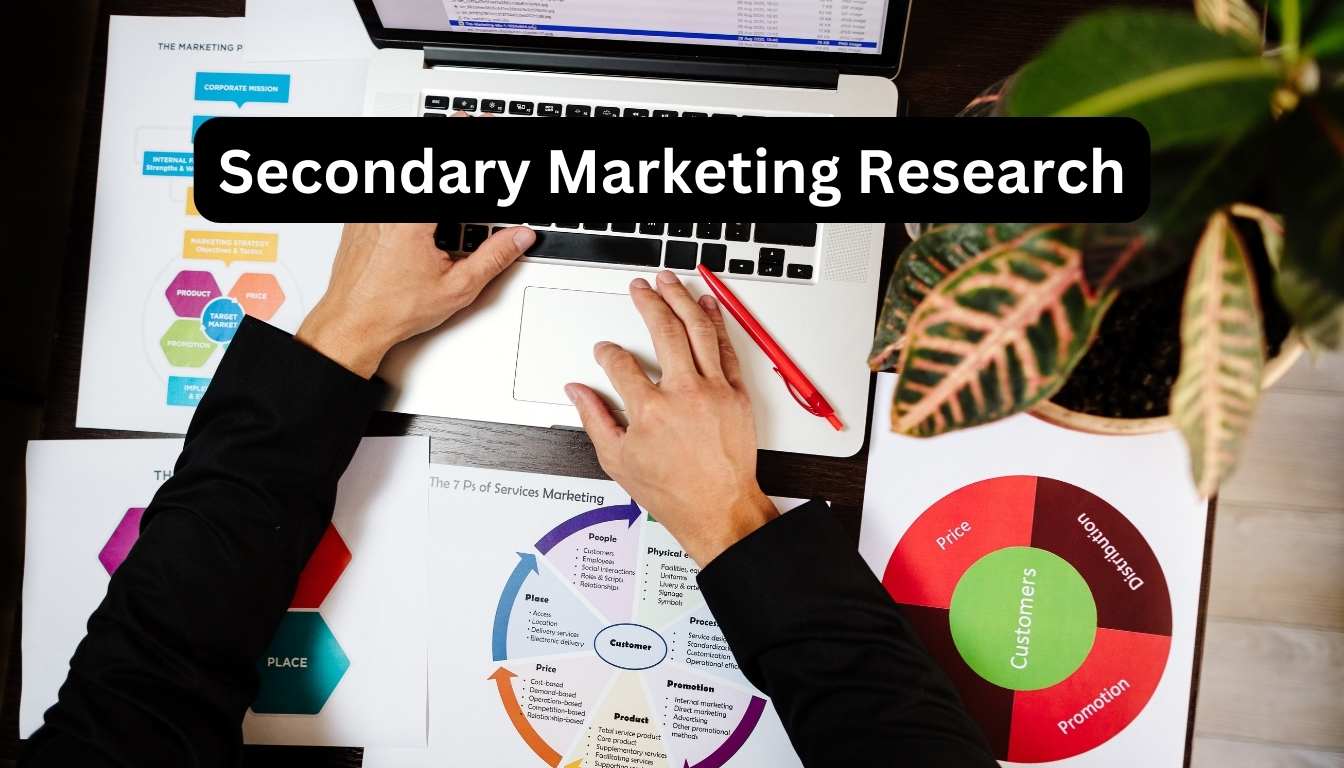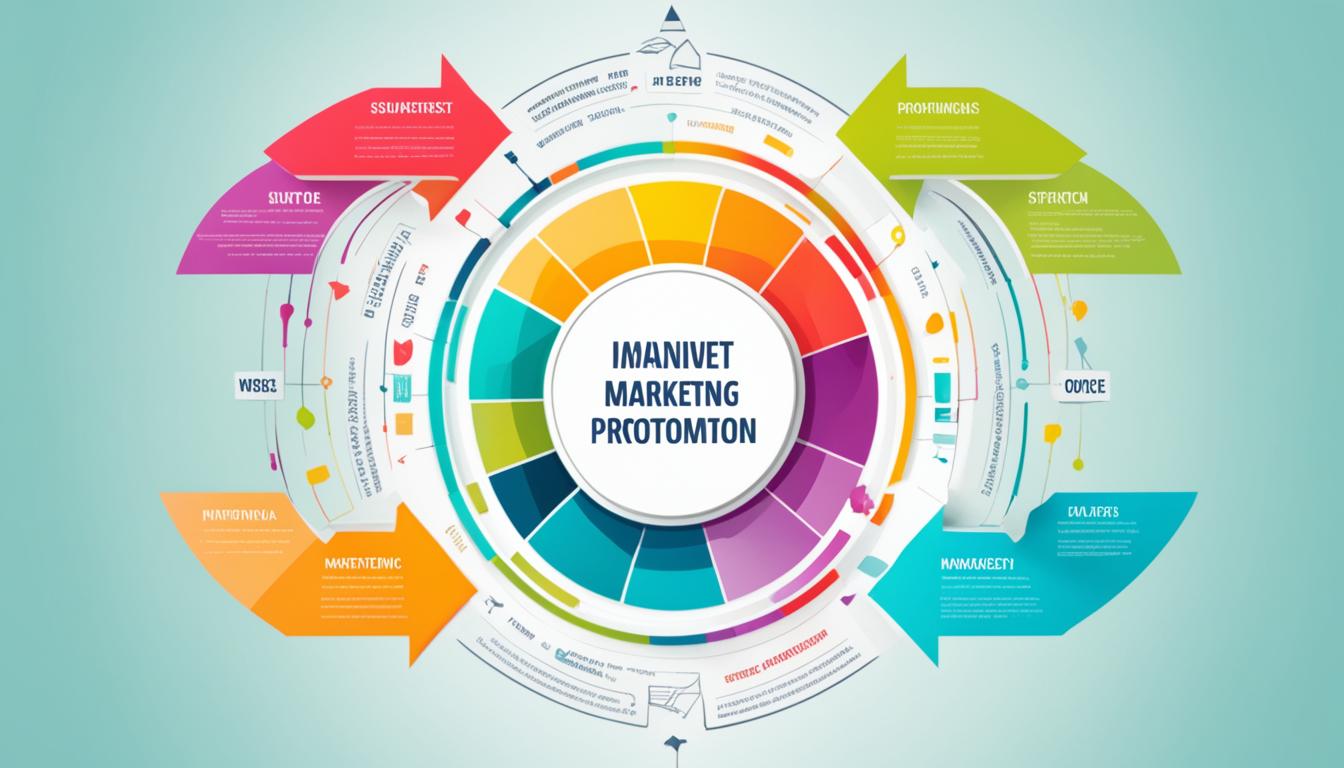Trigger marketing, known as behavioral targeting, tailors messages based on customer actions. It segments customers by their actions. This helps brands send relevant messages in real-time. It creates an effective strategy for engagement.
Data-driven marketing is at the heart of trigger marketing. It uses customer segmentation to send personalized messages. This ensures messages meet customers’ specific needs, improving engagement and increasing conversions.
Key to trigger marketing are automated campaigns. They auto-send messages when customers take action, like opening an email or visiting a website. This means brands can reach customers more effectively, increasing impact.
To sum up, trigger marketing enhances the customer journey with real-time data and automation. It personalizes messaging based on customer behavior. This boosts engagement, increases brand awareness, and drives conversions.
Key Takeaways:
- Trigger marketing uses customer actions to deliver personalized messaging.
- Segmenting customers based on behavior helps deliver relevant messages.
- Automated campaigns play a crucial role in trigger marketing.
- Data-driven marketing optimizes the customer journey.
- Trigger marketing improves customer engagement and drives conversions.
Why is Trigger Marketing Important?
Trigger marketing is a game-changer in the digital world. It helps brands connect with customers on a personal level. Using marketing automation, brands can send the right messages at the right time. This boosts customer engagement, improves communication, and raises brand awareness.
So why is trigger marketing important? Here are some key reasons:
1. Customer Engagement and Satisfaction:
Trigger marketing lets brands respond to customer actions with tailored messages. This way, brands meet their customers’ needs and interests. As a result, relationships grow stronger, which boosts customer satisfaction and loyalty.
2. Improved Communication:
Brands use trigger marketing to adapt their messages for customers at different journey points. They send personalized messages when triggered. This leads to more effective and efficient communication.
3. Enhanced Customer Service:
With trigger marketing, brands can quickly meet customer needs, offering a personalized experience. Automating emails and CRM updates helps streamline customer service. This timely support boosts customer satisfaction.
4. Increased Brand Awareness:
Trigger marketing increases brand visibility by engaging customers at just the right moment. Understanding and meeting customers’ needs leaves a positive impression. It also encourages people to talk about the brand.
Trigger marketing is vital for brands aiming to improve customer engagement, communication, customer service, and brand awareness. By using marketing automation platforms, brands can strengthen their relationships with customers. This leads to a better customer experience and long-term success.
Benefits of Using Triggers
Trigger-based marketing ups your game in many ways. It makes your overall marketing better. Here’s what it does:
- Improved customer loyalty: Trigger marketing helps build strong relationships by sending personal messages based on what the customer does. This way, it builds loyalty.
- Higher customer satisfaction: It lets you send messages at the right time, tailored to what your customers need. This makes them happier and more engaged.
- Better customer service: With automated campaigns, trigger marketing makes communication consistent and efficient. Your customers enjoy a smooth and positive experience.
- Increased brand awareness: Personalized campaigns leave a lasting impression and boost your brand’s recognition. This leads to more people knowing about your brand.
- Cost-efficiency: By automating your marketing tasks, it saves time and money. It’s a smart move for businesses big or small.
- Relevant messages: You get to send messages that matter to your customers right when they need them. This makes your communication more effective.
- Competitive advantage: Being quick and proactive in talking to your customers gives you an edge over others. It makes your business stand out.
- Business process automation: This kind of marketing makes your operations smooth by automating many processes. It boosts efficiency across the board.
- Increased conversions: Targeting customers when it matters most drives sales and ups conversions. It’s a proven way to grow your business.
- Behavior-based data: You gain insights into what your customers do. This lets you tailor your marketing better, based on solid data.
Trigger-based marketing makes a big difference in how you connect with customers. It leads to more engagement, higher sales, and real results.
Types of Marketing Triggers
Brands can engage with their audience using four main types of marketing triggers. These are event-based, engagement-based, behavior-based, and emotional triggers.
Event-based Triggers
Event-based triggers use events like brand anniversaries and holidays for campaigns. Brands send emails, push notifications, and messages during these times. This creates urgency and matches the messaging to the event, boosting engagement and conversions. Examples include holiday sales, birthday deals, and flash offers.
Engagement-based Triggers
Engagement-based triggers focus on how customers interact. They trigger messages based on actions, like welcoming new subscribers or re-engaging inactive ones. By looking at how customers engage, brands can send personalized messages. This encourages more interaction and action.
Behavior-based Triggers
This type tracks customer behaviors online. Tracking website visits, sign-ups, purchases, and cart abandonment lets brands send timely messages. They can recommend products or remind about carts based on this behavior. It helps in personalizing the customer experience at every step.
Emotional Triggers
Emotional triggers connect with customers’ feelings to boost engagement and sales. They use emotions like trust or the fear of missing out through stories or marketing. This creates a strong bond with the audience. Using customer stories, proof from others, and aspirational content are ways to do this.
Using these marketing triggers helps brands send tailored messages, engage better, and encourage specific actions. From event-based promotions to behavior analysis and emotional connection, these triggers can greatly impact marketing strategies and results.
| Type of Marketing Trigger | Definition | Examples |
|---|---|---|
| Event-based Triggers | Utilize specific events to send relevant campaigns | Holiday promotions, birthday discounts, limited-time offers |
| Engagement-based Triggers | Focus on customer engagement and behavior patterns | Welcome messages, win-back follow-ups, onboarding campaigns |
| Behavior-based Triggers | Analyze customer behavior and activities online | Product recommendations, cart reminders, personalized offers |
| Emotional Triggers | Appeal to customers’ emotions to drive engagement | Testimonials, social proof, inspirational content |
Understanding and using these marketing triggers can make campaigns more impactful. It helps connect with the audience on a deeper level and drives the actions brands desire.
How to Create a Trigger-Based Marketing Campaign
To start a trigger-based marketing campaign, pick a platform like SendPulse. It’s popular because it lets you craft and run campaigns easily.
Configuring Automation Settings
First, set up your automation on SendPulse. You’ll need to name your email series and fill in sender details. These steps are triggered by specific actions.
Setting the Event Start
Decide what action starts your campaign. It could be when someone joins your list or leaves a cart empty. Choosing the right start is key.
Adding Message Elements
Next, add what messages you’ll send, like emails or SMS. Make these messages strike a chord with your audience.
Personalizing and Targeting
On platforms like SendPulse, you can tailor messages for your audience. Use customer data for dynamic content that meets their needs.
Choosing the Right Communication Channel
SendPulse helps you choose the best way to reach people. Picking the right channel, like email or SMS, ensures your message hits home.
Selecting a Plan
SendPulse offers various plans, both free and paid. Select one that fits your business size and automation needs.
Creating Customized Trigger Campaigns
With SendPulse, create campaigns that mirror your audience’s behavior. This makes your marketing more effective.
Using SendPulse, you simplify your marketing, target your messages, and get better outcomes. By leveraging its features, your trigger campaign can really engage and motivate your audience.
Examples of Trigger Marketing
Many companies use trigger marketing to connect with customers and prospects after certain actions. Email is a common tool for this strategy, allowing companies to send customized messages based on what the customer does. Let’s look at some examples of how this works well:
Welcome Messages
When someone signs up or buys something, they get a welcome message. This note introduces them to the service or product and outlines benefits. It makes a good first impression and starts the customer relationship off right.
Birthday Emails
Sending an email on a customer’s birthday is a nice touch. Companies often include special deals to celebrate. This makes customers feel special and strengthens their connection to the brand.
Abandoned Cart Reminders
If a customer adds items to their cart but leaves without buying, an email can remind them. It sometimes offers a little push to finish the purchase. This strategy can turn lost sales into successful ones and boost the sale rates.
Follow-up Emails
After a purchase, a follow-up email thanks the customer and asks for their thoughts. These emails show that the company cares about satisfaction. They also encourage loyalty and repeat shopping.
Trigger marketing helps send personalized messages and increase customer interest. Using triggers, brands build stronger bonds with people and make more meaningful campaigns.
Trigger marketing has shown to greatly improve customer happiness, lead to more sales, and bring in higher profits. Sending the right messages at the best times makes customers’ experiences better and helps build lasting relationships.
The Importance of Trigger Marketing in B2B
In B2B marketing, understanding what makes your customers tick is key. Trigger marketing helps you connect with them based on their buying actions. This approach lets you send personalized messages that meet their specific needs. It’s a smart way to boost efficiency and make customers happy.
Building brand awareness is another benefit of trigger marketing in B2B. It’s all about keeping in touch with leads and customers at every step. This strategy strengthens your brand and creates lasting bonds. Plus, timing your messages just right boosts your chances of making a sale.
Trigger marketing shines when it comes to guiding leads closer to a purchase. By sending messages that hit the mark, businesses can address what bothers their prospects. This builds trust and makes it more likely they’ll buy from you.
This strategy also lets you send the perfect message at the perfect time based on what your customer does. It means every message feels like it was made just for them. This makes customers more satisfied and helps seal the deal.
Overall, trigger marketing is an ace up the sleeve for B2B firms. It helps grab attention, keep people interested, solve their problems, and get them to buy. With the right messages triggered by customer behavior, your marketing can really hit home.
| Benefits of Trigger Marketing in B2B |
|---|
| Increased brand awareness |
| Higher customer engagement |
| Improved customer experience |
| Nurtures leads |
| Increased conversions |
Benefits of Trigger Marketing in B2B
Trigger marketing in B2B brings many benefits that boost campaign success. It uses triggers to send the right message at the perfect time. This makes marketing more efficient and improves the customer experience.
Using trigger marketing helps B2B companies get noticed. They can connect personally with their audience, ensuring messages hit their mark. This helps build stronger relationships and increases brand loyalty.
Trigger marketing boosts the chances of getting a response from potential customers. By sending timely, relevant messages, companies make prospects more likely to act. This personalized touch speaks directly to the needs and actions of customers.
It also makes marketing strategies more efficient. B2B companies can adjust their messages based on customer actions. This ensures better use of resources and less effort wasted.
Furthermore, trigger marketing makes customers’ experiences better. It shows that companies care by sending useful messages at key moments. This builds trust and keeps customers coming back.
Overall, trigger marketing offers many benefits to B2B firms. It allows for effective messaging, targeting, and customer engagement. With personalized messages and a keen understanding of customer behavior, it’s a strong strategy in B2B marketing.
| Benefits of Trigger Marketing in B2B |
|---|
| Relevant messaging |
| Precise targeting |
| Increased efficiency |
| Improved customer experience |
| Increased brand awareness |
| Increased conversion rates |
| Personalized messaging |
Best Practices for Trigger Marketing
To make trigger marketing work well in B2B, it’s important to follow the best practices. Using key strategies helps businesses improve their marketing and get the best outcomes. These best practices are crucial for success:
1. Customer Segmentation
It’s vital to divide your customers into groups. This way, you can tailor your messages for each group. By understanding customer preferences and behaviors, you can make campaigns that truly speak to them.
2. Personalized Messaging
Personalizing your messages creates a deeper bond with your audience. Address their unique needs and interests to build trust and engagement. Change your content and how you talk based on what each customer likes and their past actions.
3. Timely Communication
Timing is key for trigger marketing. Send your messages right after a trigger event to grab your audience’s attention. Whether it’s an abandoned cart or a visit to your website, acting fast boosts your chances of getting a response.
4. Data Analysis
Analyzing data helps you understand what your customers like. Look at data from website visits, email opens, and more. This lets you tweak your campaigns for better success. Spot patterns and areas you can improve on to make your marketing stronger.
5. A/B Testing
A/B testing lets you find the best way to communicate. Try different versions of your messages to see what works best. This helps you make choices based on data and keep improving your campaigns.
6. Automation Tools
Using automation tools makes trigger marketing easier and more efficient. They help with everything from emails to managing customer journeys. Pick a tool that works well with your current systems for smoother operations.
7. Performance Metrics
It’s essential to track how your campaigns are doing. Look at open rates, click-through rates, conversion rates, and how engaged your customers are. Checking these metrics regularly helps you find ways to do better and drive results.
Stick to these practices to fully benefit from trigger marketing. Doing things like segmenting customers, personalizing messages, communicating on time, analyzing data, A/B testing, using automation, and tracking performance empowers B2B businesses. They can create campaigns that really engage customers and lead to more conversions.
Examples of Successful Trigger Marketing Campaigns
Many B2B companies use trigger marketing to send personalized messages, boost customer engagement, and increase sales. Here are some successful trigger marketing campaigns:
1. Personalized Welcome Emails
When someone new signs up, they get a personalized welcome email. It offers a warm greeting, useful information, and a personal touch. This starts things off on the right foot and prepares for more communication.
2. Abandoned Cart Reminders
If a customer fills a cart but doesn’t buy, an email or notification nudges them. It might show what they liked, suggest similar items, or offer a limited-time deal. This helps bring them back to buy.
3. Triggered Follow-Up Emails
After signing up for a webinar or downloading something, a follow-up email is sent. It gives more info, helpful resources, or special deals. This keeps the conversation going or leads to more actions.
4. Targeted Lead Nurturing Campaigns
Tracking visits, downloads, or emails lets companies send targeted nurturing campaigns. They’re customized to the customer’s interests and needs. This gives them content and messages that matter, pushing them further down the path to purchase.
These strategies show how trigger marketing offers the right messages at the best times, making customer relationships better. With the right tools and data, B2B campaigns can truly succeed, helping optimize the journey and show real results.
Tips for Implementing Trigger Marketing in B2B
Planning and executing trigger marketing in B2B is crucial. Here are tips to start:
- Gather and analyze customer data: Customer data is key for trigger marketing. Collect and study this data to find important triggers. This helps you know what your target audience likes.
- Choose the right automation platform: Pick a platform that supports trigger campaigns and works well with your systems. It should offer good segmentation and personalized messages.
- Utilize behavior-based triggers: Choose triggers based on your audience’s behavior. This means sending tailored messages when it’s most effective. It boosts engagement and conversions.
- Regularly test and optimize: Keep testing and improving your campaigns. Try different messages, times, and triggers. This way, you’ll discover what appeals to your audience.
- Track and measure performance metrics: Use tracking systems to evaluate your marketing. Look at open rates, click-through rates, conversions, and customer interaction. This info helps you make informed decisions.
Follow these tips to make your B2B trigger marketing work. It’s about tailored messages, behavior-based triggers, and smart optimization for better results.
| Benefits of Implementing Trigger Marketing in B2B |
|---|
| Improved customer engagement and satisfaction |
| Increased efficiency and automation |
| Enhanced customer experience |
| Increased brand awareness |
| Higher conversion rates |
| Personalized messaging and targeting |
| Data-driven decision making |
Conclusion
Trigger marketing lets brands connect with customers more personally. It sends timely and relevant messages. This boosts customer involvement and brand recognition while increasing sales.
Using automated platforms and data insights is key for successful trigger campaigns. It leads to results that can be measured.
To succeed in trigger marketing, B2B companies should focus on personalized messaging. Engaging customers and automating campaigns are also important. This approach builds effective campaigns that catch the audience’s interest.
Trigger marketing helps brands build stronger bonds with customers. Tailored messages reach the right people at the perfect time. This way, companies can grow customer loyalty, widen their reach, and meet their goals. Trigger marketing is vital for businesses aiming to stand out in today’s market.



